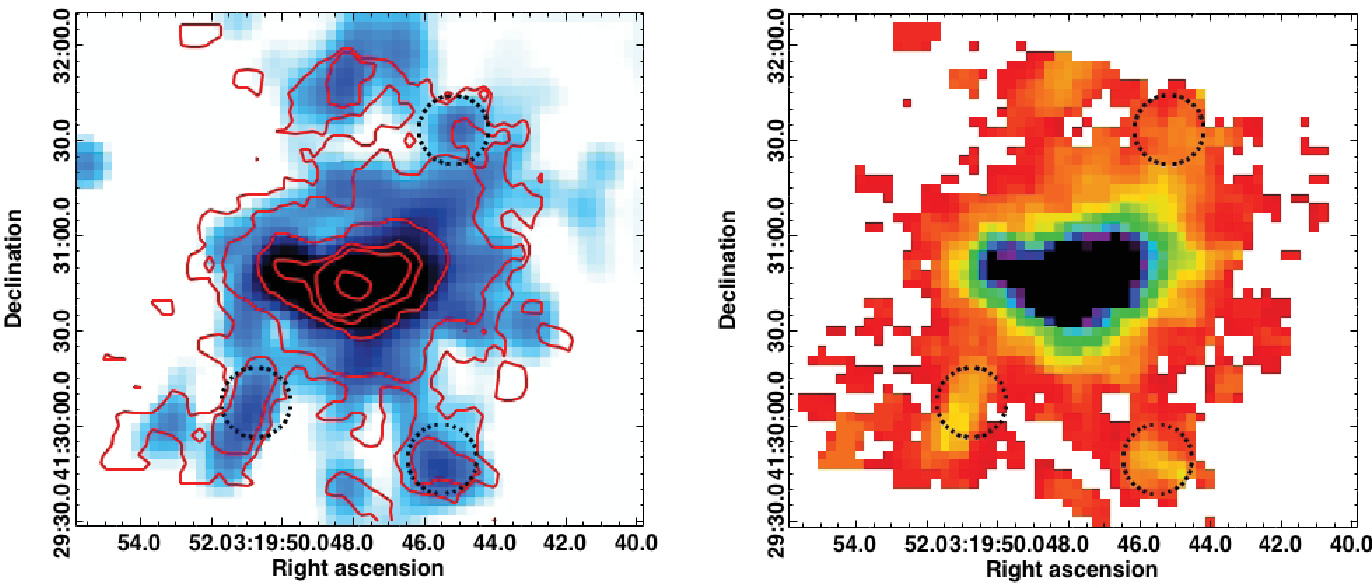Daily Image
04-02-2013Herschel reveals a web of cold gas in Perseus
| Submitter: | Raymond Oonk |
| Description: | The European Space Agency "Herschel" satellite was launched on May 14th. in 2009 and has since then given astronomers an unprecedented view of the universe at far-infrared wavelengths (55-671 micrometers). These wavelengths can not be oberved from the ground due to the opacity of the Earths atmosphere. Herschel carries with it three science instruments: (i) the Photodetector Array Camera and Spectrometer (PACS), (ii) the Spectral and Photometric Imaging Receiver (SPIRE) and (iii) the Heterodyne Instrument for the Far Infrared (HIFI). A study led by R. Mittal from the Rochester Institute of Technology, and involving ASTRON astronomer Raymond Oonk, casts new light on the extended gas nebulae surrounding the galaxy NGC 1275 at the heart of the Perseus galaxy cluster. Using PACS we spatially mapped for the first time the 5 strongest emission lines in the far-infrared (Mittal, Oonk et al. 2012, MNRAS 426:2957). In particular the [CII] line at 157 micrometer shows that an extended web of cold, atomic gas exists in the central 100 kiloparsec of the of the cluster (see image). Its morphology appears to be co-spatial with our previous observations of the ionised and molecular gas in this system. The observed FIR line ratios do not agree with our best current models for the excitation of this multiphase gas and as such we are now pursuing new ways to explain its mysterious properties. IMAGE: Central 100 kiloparsec of the Perseus cluster. (Left) Smoothed H-alpha line flux image with Herschel [CII] 157 micrometer contours overlaid. (Right) Herschel [CII] 157 micrometer line flux (color scale: black has the highest flux, red has the lowest flux). |
| Copyright: | R. Mittal, MNRAS |
| Tweet |  |
